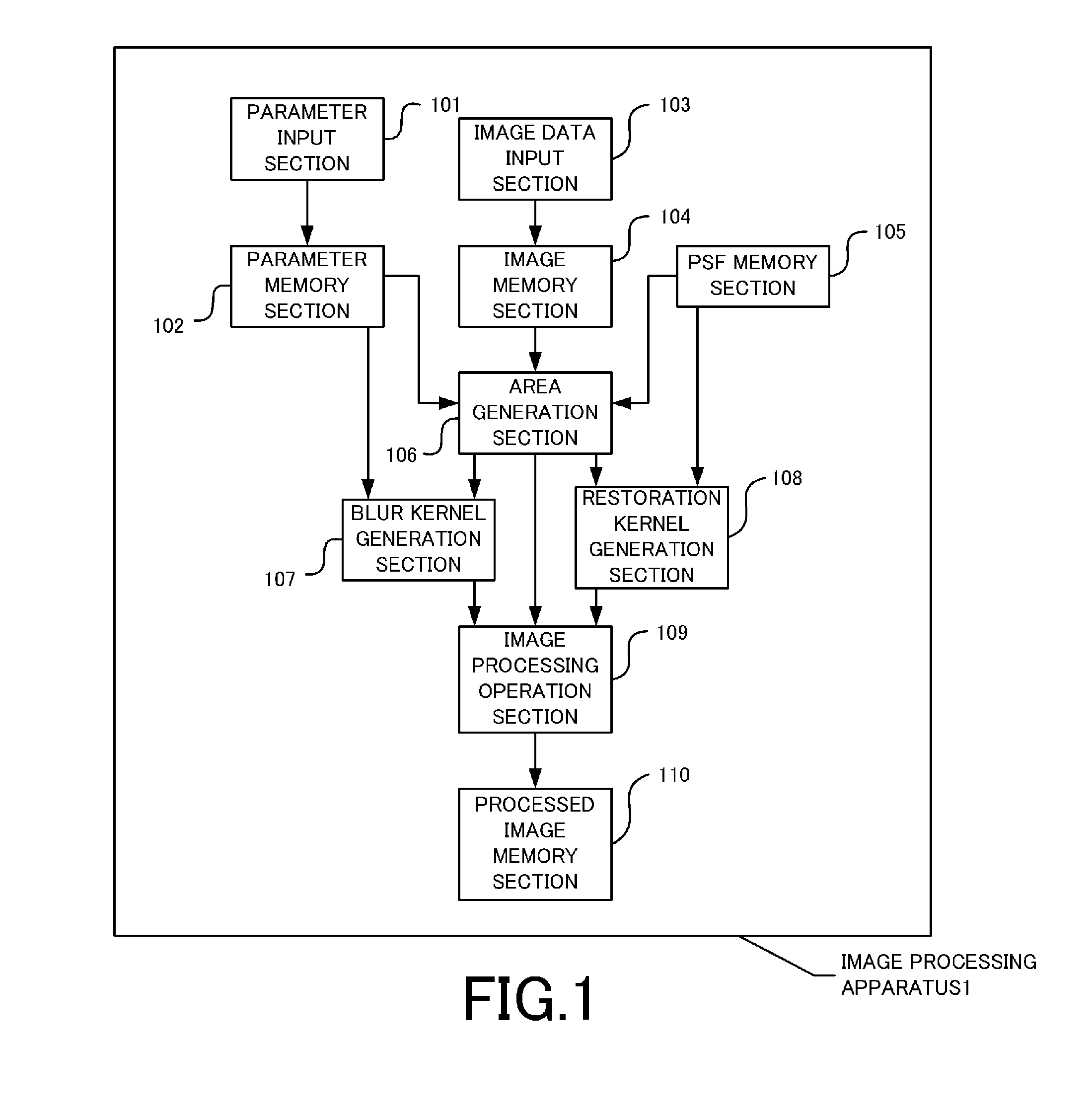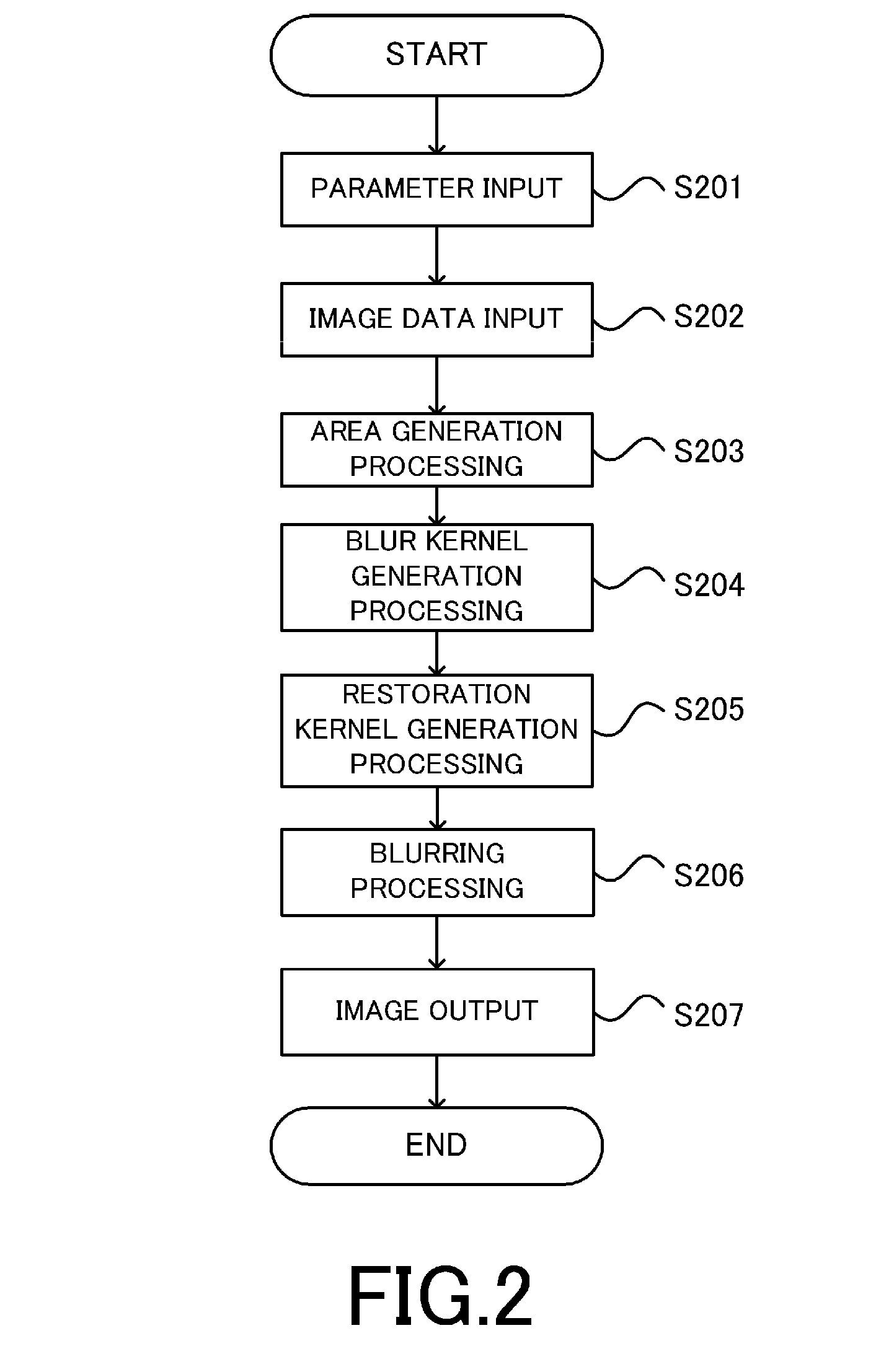Image processing apparatus, image pickup apparatus, image processing method, and image processing program
a technology of image processing and image pickup, applied in the field of digital image processing, can solve the problems of image quality after blurring, inability to obtain an image, and difficulty in reducing the size of the camera, and achieve the effect of high quality
- Summary
- Abstract
- Description
- Claims
- Application Information
AI Technical Summary
Benefits of technology
Problems solved by technology
Method used
Image
Examples
first embodiment
[0022]Hereinbelow, a description will be given of an image processing apparatus as one aspect of the present invention with reference to the drawings. Like reference numeral in each drawing denote like means. Note that the scope of the present invention is not intended to be limited to examples shown in the description of the embodiments.
[0023]FIG. 1 is a system configuration view of an image processing apparatus according to a first embodiment.
[0024]An image processing apparatus 1 has a parameter input section 101, a parameter memory section 102, an image data input section 103, an image memory section 104, a PSF memory section 105, and an area generation section 106. In addition, the image processing apparatus 1 also has a blur kernel generation section 107, a restoration kernel generation section 108, an image processing operation section 109, and a processed image memory section 110.
[0025]The image processing apparatus according to the present embodiment may be implemented by us...
second embodiment
[0069]An image pickup apparatus according to a second embodiment is an image pickup apparatus including the image processing apparatus 1 according to the first embodiment. FIG. 7 shows the configuration of the image pickup apparatus according to the present embodiment. An image pickup apparatus 4 is typically a digital still camera, a digital video camera, or the like.
[0070]In FIG. 7, the reference numeral 400 denotes an image pickup lens that guides a subject light to an image pickup element 402. The reference numeral 401 denotes an exposure control element including a diaphragm and a shutter. The subject light having entered via the image pickup lens 400 enters into the image pickup element 402 via the exposure control element 401. The image pickup element 402 is an image pickup element that converts the object light to an electric signal and outputs the electric signal, and is constituted by an image sensor such as a CCD or a CMOS.
[0071]An image-forming circuit 403 is a circuit f...
third embodiment
[0078]A third embodiment is an embodiment in which the kernel similarity I in the first embodiment is determined based on a visual spatial frequency characteristic in addition to the frequency characteristic of the kernel.
[0079]The present embodiment is different from the first embodiment only in the calculation method of the kernel similarity in Steps S301 and S302. The configuration and the processing method are otherwise the same as those in the first embodiment.
[0080]In the present embodiment, the kernel similarity is calculated by using the visual spatial frequency characteristic in addition to the MTF of each of the blur kernel and the restoration kernel. As an example, a value called a cascaded modulation transfer acutance (CMTA) is used. The CMTA is described in detail in “TAKAGI Mikio, SHIMODA Haruhisa, “Handbook of Image Analysis (Revised Edition)”, University of Tokyo Press, p. 77-78, 2004”.
[0081]It is possible to determine the shift-invariant area by using the method des...
PUM
 Login to View More
Login to View More Abstract
Description
Claims
Application Information
 Login to View More
Login to View More - R&D
- Intellectual Property
- Life Sciences
- Materials
- Tech Scout
- Unparalleled Data Quality
- Higher Quality Content
- 60% Fewer Hallucinations
Browse by: Latest US Patents, China's latest patents, Technical Efficacy Thesaurus, Application Domain, Technology Topic, Popular Technical Reports.
© 2025 PatSnap. All rights reserved.Legal|Privacy policy|Modern Slavery Act Transparency Statement|Sitemap|About US| Contact US: help@patsnap.com



